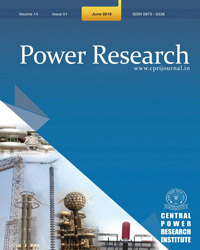The Structure and Cure Mechanism of 2, 3-Bis (Benzimidazolyl) Pyridine with an Epoxy Resin System
Subscribe/Renew Journal
2, 3-bis (benzimidazolyl) pyridine was synthesised and characterised by CHN analysis and techniques like infrared spectra, mass spectra and NMR studies. The structure was established using the X-ray crystallography technique.
The cure behaviour of 2, 3-bis (benzimidazolyl) pyridine has been investigated with bisphenol-A based epoxy resin with an anhydride hardener. The study has revealed that this ligand behaves like an accelerator by reducing the cure and gel times of the resin system. Kinetic studies based on DSC showed that the rate of curing increased with enhanced concentration of this accelerator. The electrical properties of the cured epoxy resin were unaffected with lower concentrations of 2, 3-bis (benzimidazolyl) pyridine. A mechanism for curing has been proposed based on infrared spectral studies which indicate the involvement of the secondary and tertiary nitrogen of 2, 3-bis (benzimidazolyl) pyridine which enhances the cross-linking of the resin system.



